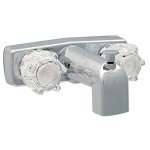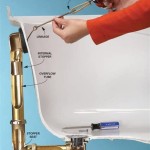Essential Aspects of the Best Small Bathtubs
When space is at a premium, choosing the right bathtub can be a challenge. Compact size doesn't have to compromise comfort or style. Here are some key aspects to consider when selecting the best small bathtub for your needs:
Dimensions:
Measure the available space to determine the maximum dimensions of the bathtub. Consider the width, length, and height, ensuring there's ample room for stepping in and out, as well as for showering if desired.
Shape:
Small bathtubs come in various shapes, including rectangular, oval, and corner models. Rectangular tubs are the most space-efficient, while oval tubs offer a more luxurious, curved design. Corner tubs can maximize space in small bathrooms.
Material:
Fiberglass, acrylic, and cast iron are common materials used in small bathtubs. Fiberglass is lightweight and affordable, acrylic is non-porous and easy to clean, while cast iron provides durability and excellent heat retention.
Style:
Even small bathtubs can complement your bathroom decor. Freestanding tubs offer a modern and elegant look, while alcove tubs fit into a recessed space. Clawfoot tubs add a touch of vintage charm.
Functionality:
Consider additional features such as built-in shelves or a showerhead. Shelves provide convenient storage for bath products, and a showerhead allows for a refreshing shower without taking up extra space. Other options include whirlpool jets or heated surfaces for a spa-like experience.
Installation:
Determine if the bathtub requires professional installation or if it can be installed as a DIY project. Freestanding tubs typically need less installation effort than alcove or corner tubs.
Budget:
Small bathtubs vary in price depending on size, material, and features. Set a realistic budget that considers both the bathtub and installation costs.
Comfort:
Despite their smaller size, small bathtubs can still offer a relaxing bathing experience. Look for tubs with ergonomic designs that provide adequate back support and legroom.
Durability:
Choose a bathtub made of durable materials that can withstand daily use and resist chipping, cracking, or fading over time. Quality construction ensures a long-lasting investment.
Small Bathtub 10 Best S For A Tiny Bathroom Architecture Design

Condo Bathtubs Small Luxury One Person Bathtub

Beautiful Small Bathtubs That Will Make You Fall In Love

12 Bathtubs For Small Spaces 2024 Badeloft

12 Bathtubs For Small Spaces 2024 Badeloft

5 Best Freestanding Bathtubs For Small Spaces Tyrrell And Laing

60 Inches Or Less Bathtubs 11 Small For Bathrooms

Best Types Of Small Bathtubs Modernize

Small Bathtub Ideas And Options Pictures Tips From
Small Bathtub 10 Best S For A Tiny Bathroom Architecture Design
Related Posts








